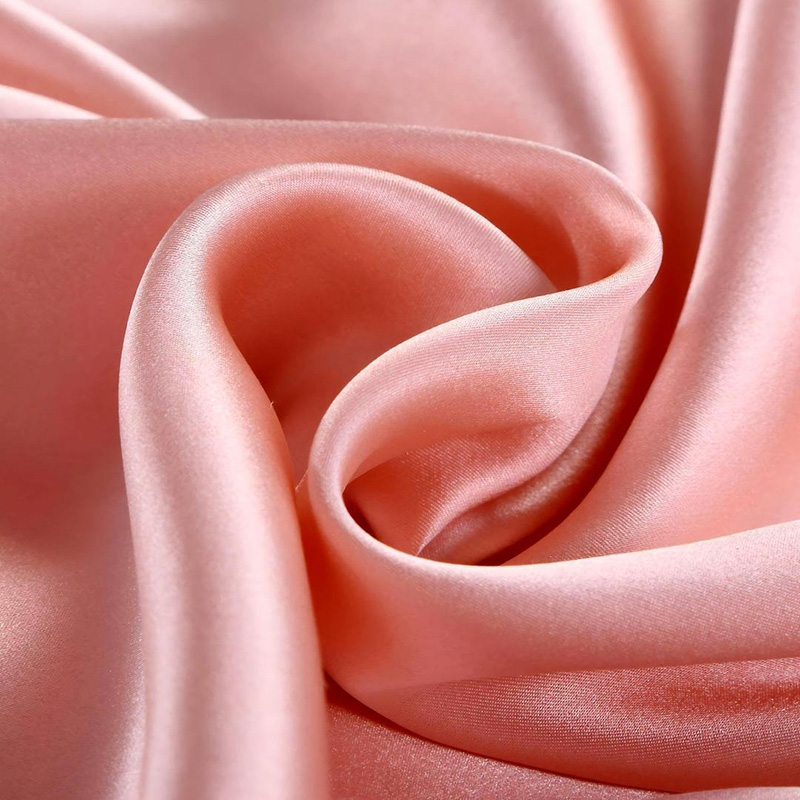Silk, known as the "Queen of Textiles," is a natural protein fiber produced by silkworms, primarily the Bombyx mori species. With a history spanning over 5,000 years, silk remains one of the most coveted and luxurious fabrics worldwide, celebrated for its unique combination of aesthetic appeal and functional properties.

Despite its delicate appearance, silk possesses remarkable tensile strength. Silk fibers demonstrate a breaking tenacity of approximately 4.5 grams per denier when dry and maintain about 3.5 grams per denier when wet. This strength-to-weight ratio exceeds that of many synthetic fibers, with silk having a tensile strength ranging from 500 to 1,000 MPa. The fiber's crystalline structure, composed of fibroin proteins arranged in beta-pleated sheets, contributes to this durability while maintaining flexibility.
Silk's moisture-wicking capabilities are exceptional among natural fibers. It can absorb up to 30% of its weight in moisture without feeling damp to the touch, compared to cotton's 25% absorption rate. The fabric's triangular prism-like structure refracts light at different angles, giving silk its natural shine while creating microscopic air pockets that enhance breathability. This hygroscopic property allows silk to maintain comfortable body temperature in both warm and cool conditions, with a moisture regain of 11% at standard conditions (65% relative humidity, 70°F).
Silk provides excellent thermal insulation due to its unique protein structure. The fabric creates a microclimate around the skin, maintaining a consistent temperature regardless of environmental conditions. Silk has a thermal conductivity of approximately 0.05 W/m·K, making it an effective insulator while remaining lightweight. This bi-directional temperature regulation capability allows silk to keep the body warm in winter (retaining body heat efficiently) and cool in summer (promoting evaporative cooling), with heat retention properties measured at 15-20% higher than cotton equivalents.
Silk's natural protein structure makes it resistant to dust mites, mold, and mildew, with studies showing a 85% reduction in dust mite population compared to cotton bedding. The smooth filament fibers, typically 1-2 denier in fineness (significantly finer than human hair), create a friction coefficient of only 0.25-0.35, minimizing skin irritation. Medical research indicates that silk can help reduce skin inflammation and is naturally bacteriostatic, inhibiting bacterial growth by 70-80% compared to synthetic fabrics.
Silk provides natural ultraviolet protection with a UPF (Ultraviolet Protection Factor) rating of 15-25 for standard weight silk, blocking approximately 93-96% of UV radiation. The fabric's molecular structure allows for exceptional dye absorption, with silk capable of holding up to 1.5 times more dye than cotton by weight. This results in vibrant, long-lasting colors that maintain 85-90% of their original vibrancy after 50 standard washes when properly cared for.
Silk remains the gold standard for luxury fashion items including evening gowns, neckties, scarves, and blouses. Designers prefer silk for its drape coefficient of 55-65%, which creates fluid, elegant silhouettes. The fabric's ability to hold intricate prints and embroidery makes it ideal for haute couture, with premium silk garments maintaining their structural integrity for 15-20 years with proper care.
Medical-grade silk is used in surgical sutures due to its biocompatibility and strength retention of 75-80% after 60 days in biological environments. Silk bedding is prescribed for patients with eczema and sensitive skin conditions, with clinical studies showing a 40% reduction in itching and irritation. The fabric's natural temperature regulation helps manage night sweats and hot flashes.
Silk draperies and upholstery provide natural insulation, reducing heat transfer by 20-25% compared to synthetic alternatives. Silk wall coverings offer acoustic benefits, absorbing approximately 30% of ambient noise. In bedding, Silk Pillowcases reduce hair breakage by 43% and minimize sleep creases due to the low friction surface.
Silk's mechanical properties make it valuable in composite materials, with young's modulus measuring 10-15 GPa. It's used in lightweight armor systems, parachutes (where its strength-to-weight ratio of 4.5 g/denier is critical), and precision instruments. Recent developments include silk-based biodegradable electronics and medical implants.
Hand wash silk in cold water (below 30°C/86°F) using pH-neutral detergents specifically formulated for silk (pH 5.5-6.5). Avoid alkaline cleaners as they can damage silk's protein structure. The mechanical action during washing should be gentle, with a maximum agitation speed of 400 RPM if machine washing. Always use the delicate cycle and place silk items in a mesh laundry bag.
Never wring silk fabric as this can cause permanent distortion of the fiber alignment. Instead, roll the garment in a clean towel to remove excess moisture, achieving approximately 50-60% moisture removal. Air dry away from direct sunlight, maintaining a drying temperature below 35°C/95°F. UV exposure for more than 2 hours can degrade silk proteins and cause yellowing.
Iron silk while slightly damp using the lowest heat setting (110-130°C/230-266°F). Always use a pressing cloth and iron on the reverse side to prevent water spotting and shine marks. For storage, maintain relative humidity between 50-60% and temperature between 15-25°C/59-77°F. Use acid-free tissue paper and avoid plastic containers, which can trap moisture and promote mildew growth.
Address stains immediately using the "blot, don't rub" method. For protein-based stains, use cold water and mild enzyme cleaners. Oil-based stains require specialized silk-safe solvents. Always test cleaning solutions on hidden areas first. Professional dry cleaning is recommended for stubborn stains, using tetrachloroethylene-free processes to preserve fiber integrity.